

Vatican City

facade of St. Peter's Basilica
Vatican City, independent state, under the absolute authority of the pope of the Roman Catholic church. It is an enclave within Rome, Italy, with an area of 44 hectares (110 acres). The smallest independent country in the world, Vatican City was established in 1929 under terms of the Lateran Treaty, concluded by the Italian government and the papacy after many years of controversy. This treaty was superseded in 1984 by a new concordat, which, like its predecessor, recognized the full sovereignty of the Holy See (the jurisdiction of the pope) within the state of Vatican City. For the history of the papal territories before 1929.
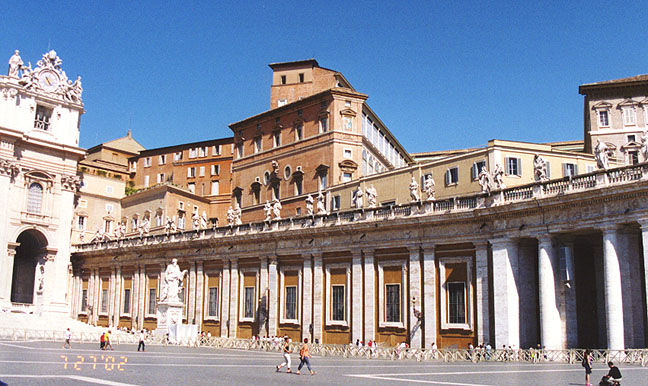
along Piazza San Pietro
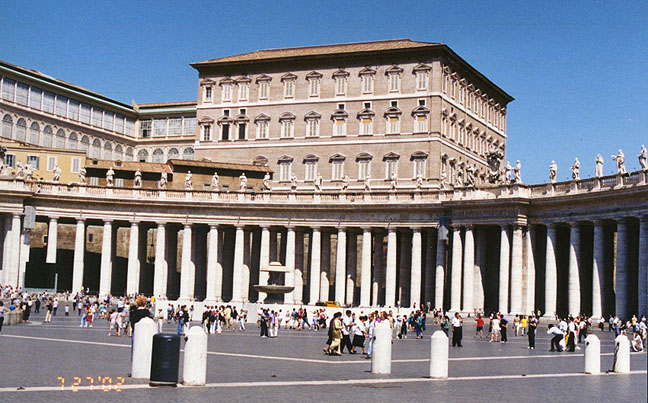
Papal apartments
(Pope appears in second window from the right, top floor)
Vatican City is situated on Vatican Hill in northwestern Rome, just west of the Tiber River. It is surrounded by medieval and Renaissance walls and has six gates. Many of the most renowned artists and architects of the Italian Renaissance were commissioned by popes to work on the Vatican's buildings. The most imposing and important edifice is Saint Peter's Basilica. Built for the most part between the 15th and 17th centuries, and designed by artists, including Bramante, Michelangelo, and Gianlorenzo Bernini, it is the world center of Roman Catholic worship. In front of the basilica is the great Piazza San Pietro (Saint Peter's Square).
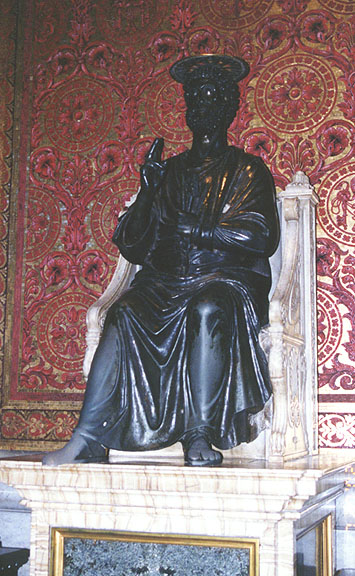
statue of St. Peter
(people rub his feet, causing deterioration and the need to repair it,
several several times over the years)
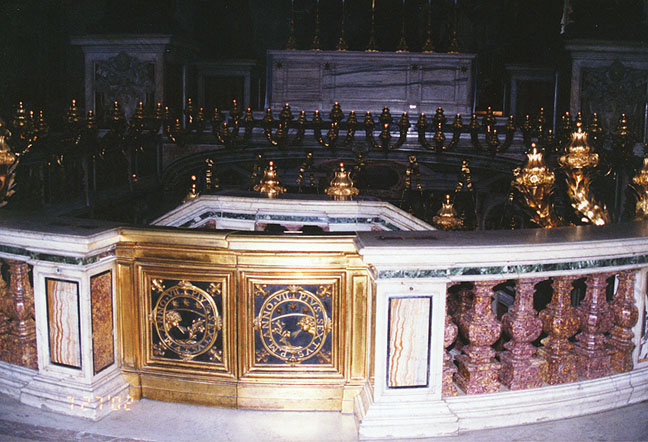
lights burning in front of the altar over the burial place of St. Peter
The other major edifice is the Palace of the Vatican, also known as the Papal Palace. It is a complex of buildings that contains more than 1,000 rooms and houses the papal apartments, the government offices of the Roman Catholic church, several chapels and museums, and a library.
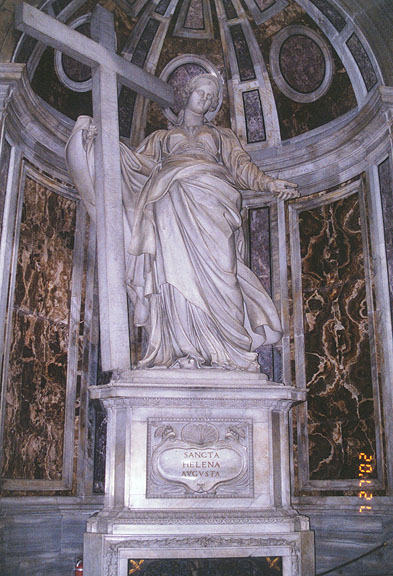
Helena, mother of Constantine
(who in the year 300, collected relics from the Holy Land,
including a piece of the cross sent to Rome)
The most famous portions of the palace are the Sistine Chapel, with its great ceiling frescoes painted by Michelangelo (restored 1980-1990); and Raphael's Rooms, papal apartments with frescoes painted by the Italian artist Raphael. The Vatican's museums are outstanding and include the Gregorian Museum of Egyptian Art; the Gregorian Museum of Etruscan Art; the Pio Clementino Museum, with a superlative collection of antiquities; the Chiaramonti Museum; and the Vatican Pinacoteca, with representative works by Italian masters.
![]()
Art Works made from marble
in St. Peter's Basilica
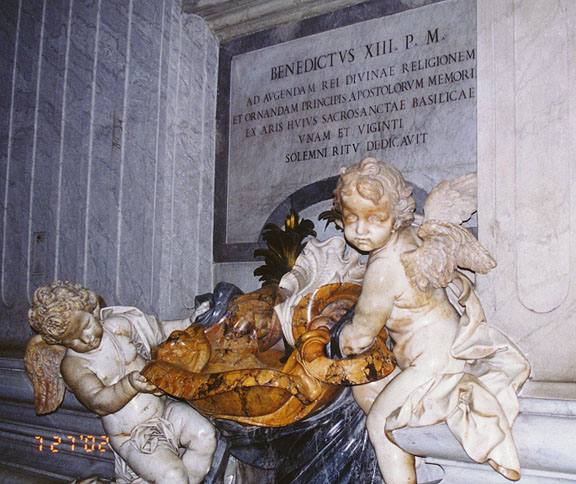
cherubs
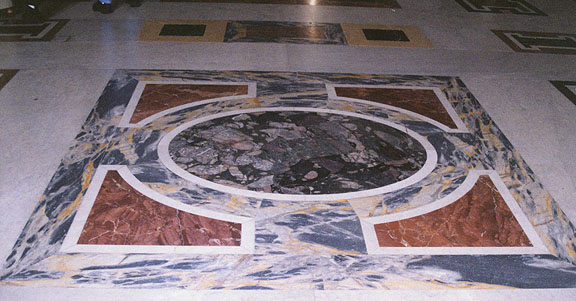
the floor
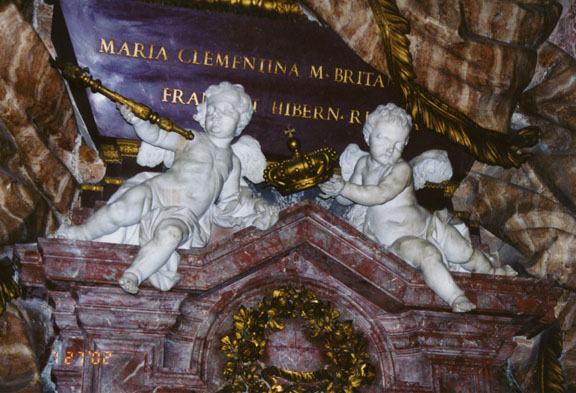
over the doors
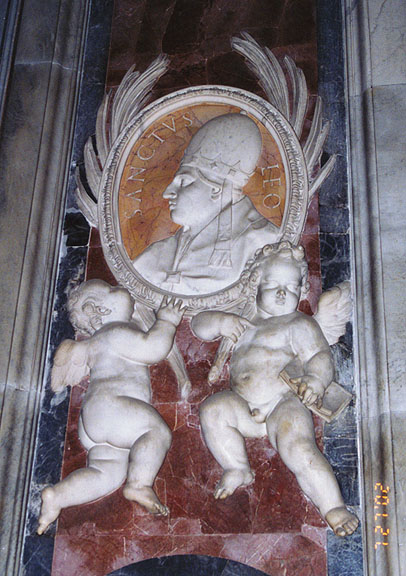
on the pillars
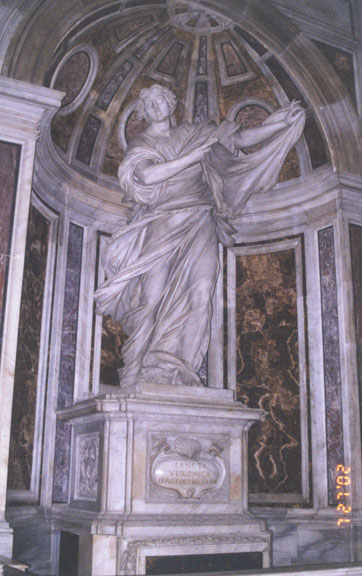
Saint Veronica
(opposite Saint Helena in front of St Peter's)
![]()
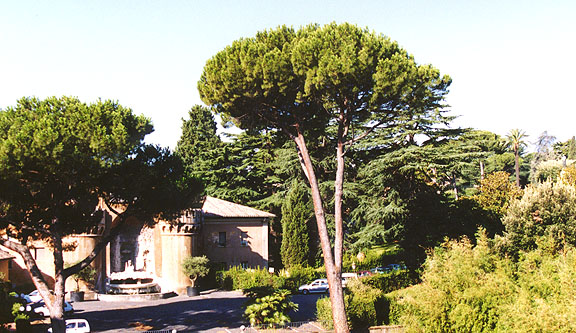
Vatican gardens
The Vatican Library has a priceless collection of ancient manuscripts and more than 1 million bound volumes. Also within the Vatican's walls are the Government Palace and the Vatican Gardens.
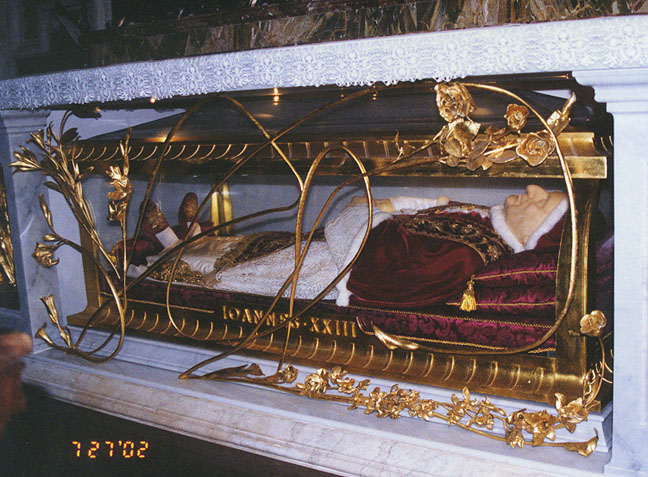
the remains of Pope John 23rd
resting in St. Peter's Basilica
(in the process of being canonized)
Vatican City is governed by the pope, who has absolute executive, legislative,
and judicial powers. The executive powers are delegated to a governor, who is
responsible directly to the pope. In the exercise of his legislative powers, the
pope is advised and assisted by the Sacred College of Cardinals and by the
various Sacred Congregations. The judicial powers are exercised by tribunals;
appeals from their decisions are heard by the sacred Roman Rota and by the
Supreme Tribunal of the Apostolic Signature. The Secretariat of State represents
the Holy See in diplomatic relations with foreign powers. Swiss Guards maintain
internal security and protection of the pope; the Piazza San Pietro is subject
to the authority of the Italian police. Castel Gandolfo, the papal summer palace
outside Rome, as well as other buildings located in Rome but outside of Vatican
City, are endowed with extraterritoriality.

Swiss guard
Vatican City has its own currency (equal to the Italian lira) and postal system.
It also has a railroad station and radio station, and manages its own telephone
and telegraph services. Government expenditures in 1994 were $175 million. A
daily newspaper and an official monthly journal are published, as are books and
pamphlets in numerous languages. Population (1997 estimate) 850.
Text from Microsoft Encarta
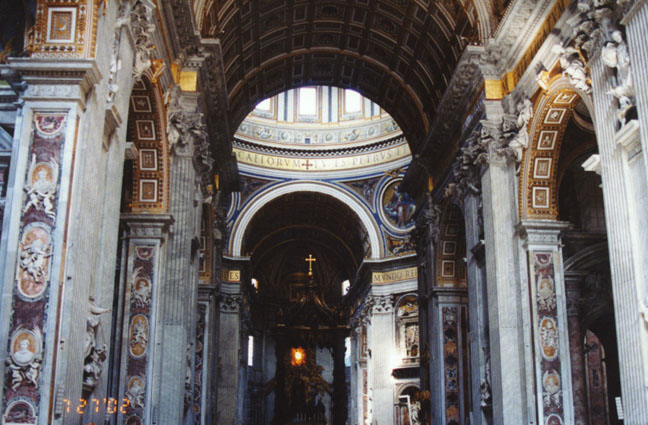
inside St Peter's
Other Photos of Vatican City and the Vatican Museum
![]()
Return to European trains page
![]()